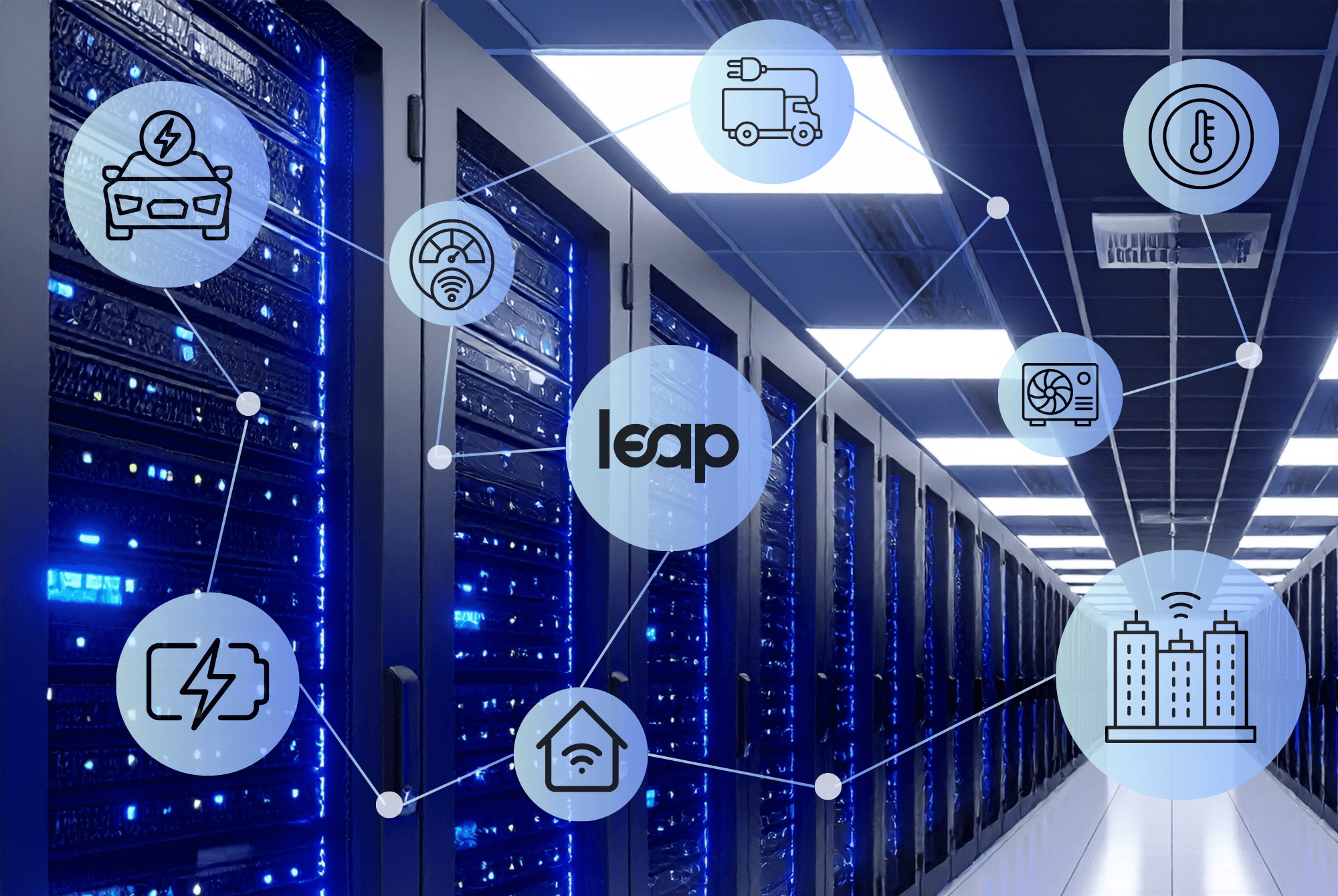December 7, 2023

Welcome back to our automation blog series, where we delve deeper into our platform’s transformative API capabilities for virtual power plant (VPP) solutions. In our previous blog, we explored how residential energy technology providers can most effectively approach automation workflows with Leap. In our second installment, we’re shifting our focus to technology providers with commercial & industrial (C&I) customers who are generally managing and enrolling much larger resources.
As mentioned in our first blog, Leap offers a suite of universal APIs that work across electricity markets and programs to enable automation across the four main stages along the journey of an energy asset (i.e, a customer meter) generating revenue in grid services programs:
Connect - Connect customer meters to the Leap platform.
Manage - Set initial configuration and manage ongoing grid services participation.
Bid & Dispatch - Activate customer meters to participate in grid events.
Analyze - Measure and assess grid services performance.
Leap partners enjoy the flexibility to choose which of these stages and use cases to automate, and when, along with how they want to build on top of these Leap endpoints to differentiate their VPP offerings.
Since most of Leap’s partners don’t have the available development resources to automate everything at once, we’ll focus today’s blog on the recommended phasing and best practices for C&I partners based on learnings from our existing partners who have successfully grown their Leap-powered VPP programs. We’ll wrap up this series next month by sharing the scale and revenue benefits that both our residential and C&I API-integrated partners have experienced.
Recommended phasing for C&I providers
Since commercial and industrial providers are connecting larger resources, the recommended automation phasing is slightly different than residential partners. Residential partners have an extra focus on enrolling large numbers of devices, whereas C&I partners are more focused on getting the maximum value out of their larger commercial resources. Accurately and consistently dispatching and then monitoring grid event performance is critical to scaling commercial VPP programs.
Phase One: Automate dispatch events
At launch, the following automation use cases are recommended in order to get the most value out of the initial launch:
Use the Meters API to sync meter inventory data between the Leap platform and your internal systems as a precursor to receiving dispatch events.
Leverage the Dispatch API to receive prioritized event notifications pushed to your webhook endpoint (event polling is also possible) in real time and automate control of your customer devices using the relevant dispatch strategies.
Most partners receive dispatch notifications by setting up a webhook endpoint for Leap to push event notifications to because it is more efficient than continuously polling the Leap API and allows for timely notifications (especially important for real-time events). In addition, the webhook method allows partners to send test event notifications to themselves in staging or production whenever they like. This makes it very easy to test dispatch integration logic and downstream processing.
The integration work in this phase can typically be completed within a two-week development sprint, as the primary effort is in taking the Leap event notification and ensuring events get scheduled correctly downstream.
Phase Two: Integrate dynamic bidding (applicable to C&I battery storage partners in CAISO)
C&I storage providers often need to take into account a variety of factors when managing a battery’s discharge rate and timing, including the sometimes-variable load needs onsite, energy arbitrage goals and demand charge management. Given this, partners appreciate the ability to dynamically bid into the CAISO wholesale market based on these factors in order to capture opportunistic revenue.
Within the first six months of launch, we recommend our C&I storage partners in CAISO complete this workflow in order to manage their bids:
Use the Bid API in CAISO to manage bidding strategies and capture opportunistic revenue.
Phase Three: Track event performance
Within the first nine months after launch, we recommend automating the following analytics use case in order to optimize event performance and drive revenue growth:
Leverage the Analytics API to track event performance and flag underperforming meters for follow-up. Integrate event performance, and optionally raw interval data, into relevant internal systems & dashboards.
Following this phasing ensures that you are getting the benefits of automation across the entire customer meter journey in order to scale revenue growth, while also limiting the number of development resources required.
Next up will be the final article in our series, where we’ll share the scale and revenue benefits our API-integrated partners have seen compared to those partners who have not yet integrated. If you have any questions in the meantime, please reach out to partners@leap.energy.


